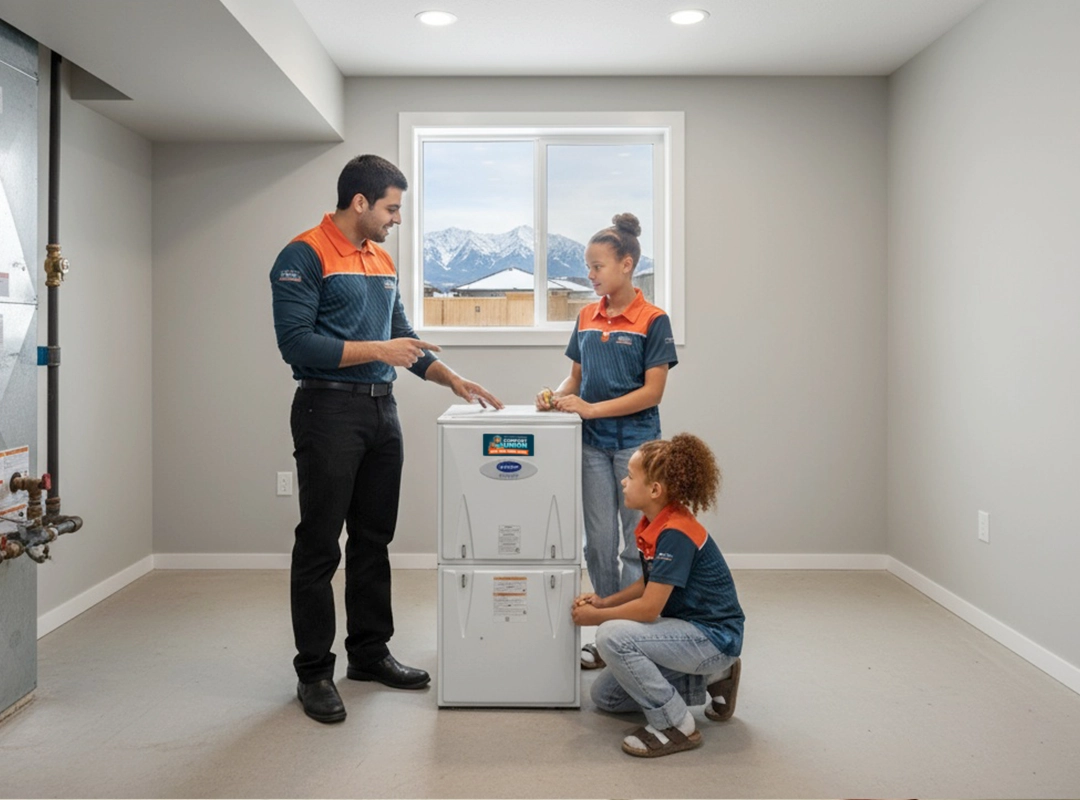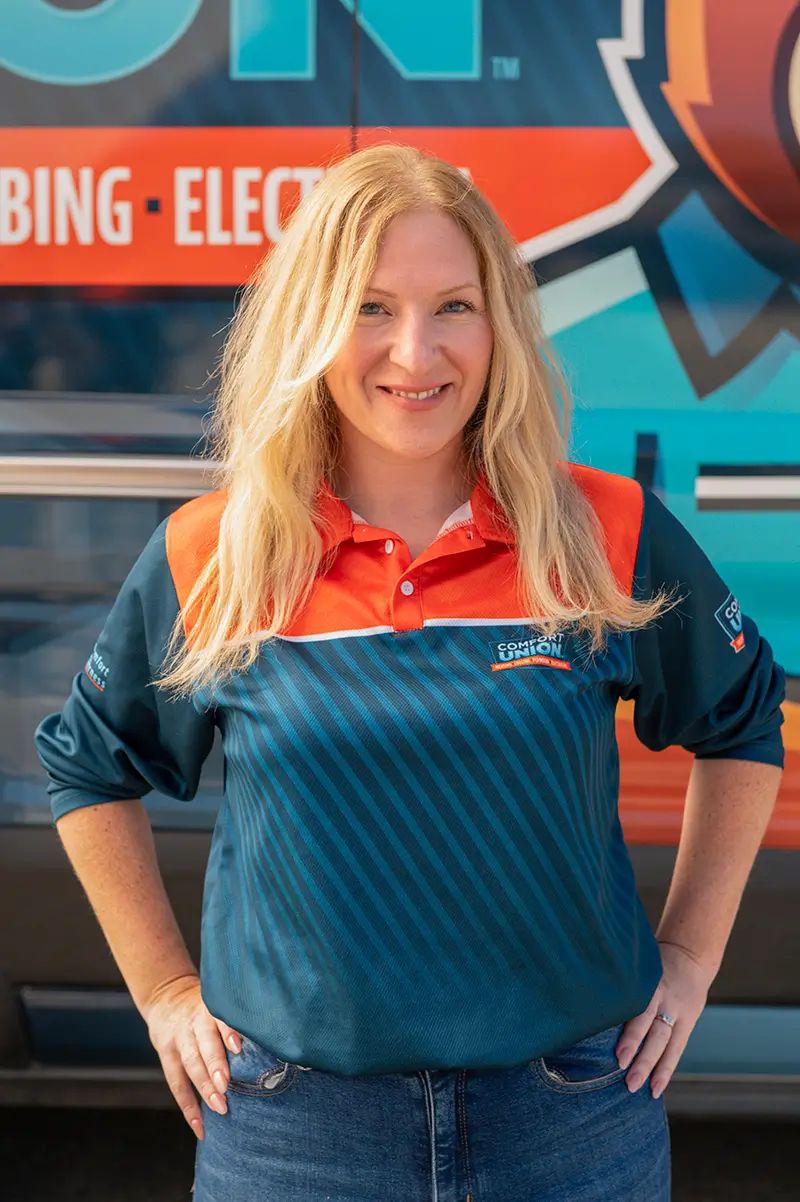If you have lived through a Calgary winter, you know the cold comes fast and stays for months. A properly sized furnace is essential in this climate, and choosing the right furnace size can be the difference between a warm, efficient home and one that struggles all season long. Many Calgary homeowners think furnace size is only about square footage, but that is just the starting point. Climate, insulation, and home design influence which furnace size is right for your home.
This guide explains what furnace size means, how to calculate it properly, and what Calgary-specific factors matter most. With the right furnace size, you can enjoy consistent heat, lower utility bills, and fewer breakdowns during the coldest months.
What Is BTU and Why Does It Matter for Furnace Size?
A furnace’s heating capacity is measured in BTUs, which stands for British Thermal Unit. One BTU is the energy needed to warm a pound of water by one degree Fahrenheit. If your furnace is rated at 80,000 BTUs, it delivers 80,000 units of heat every hour.
The important thing is that BTUs must match your home’s needs. Too few BTUs and your furnace runs nonstop, never reaching the temperature you set. Too many BTUs and the furnace starts and stops repeatedly, causing uneven temperatures and higher wear on parts.
If you are planning a furnace installation, your furnace size is one of the most important choices you will make. Matching BTUs to your square footage and home design ensures better comfort and lower heating costs.
Need a New Furnace?
With Flexible Financing Options
How to Estimate the Proper Furnace Size for Your Calgary Home

A common guideline is 30 to 60 BTUs per square foot of living space. This helps you estimate furnace size before shopping for equipment, but a professional Manual J calculation is always the most accurate method.
You can also use a trusted furnace size calculator or refer to industry resources like Carrier’s calculating furnace size guide to understand how insulation, layout, and climate influence the right system capacity.
Here is a simple breakdown:
Home Size (sq. ft.) | Recommended Furnace Size (BTUs) |
1000 | 30,000–60,000 |
1500 | 45,000–90,000 |
2000 | 60,000–120,000 |
2500 | 75,000–150,000 |
3000 | 90,000–180,000 |
These ranges help Calgary homeowners compare furnace options, but construction style, insulation, and window performance greatly influence the right furnace size for each home.
Local Calgary Factors That Influence Furnace Size
Calgary’s weather, home styles, and construction methods can shift your furnace size requirements significantly.
Insulation Levels
Older homes in Bowness, Parkdale, or Lake Bonavista may have weaker insulation than newer builds in Seton or Livingston. Homes with poor insulation need larger furnace sizes because heat escapes more quickly.
Window Quality
Drafty or single-pane windows significantly increase heat loss. Homes with double or triple-pane windows recommended by Efficiency Alberta often need smaller furnace sizes because heat retention is better.
Personal Heating Preferences
Calgary families who prefer warmer indoor temperatures during winter usually require a furnace on the higher end of the BTU range.
Why Proper Furnace Size Matters in Calgary
Choosing the right furnace size affects comfort, efficiency, and long-term operating costs. An incorrect furnace size also leads to more frequent furnace repair needs as components wear out prematurely.
A properly sized furnace helps ensure:

1. Even temperatures throughout the home
A correctly sized furnace distributes heat more evenly, reducing cold spots in basements, bedrooms, and bonus rooms. Calgary homes with mixed layouts benefit especially from balanced airflow during long winter stretches.
2. Lower monthly heating bills
When your furnace isn’t oversized or undersized, it runs at its intended efficiency and avoids unnecessary energy use. This keeps your gas bills predictable even during deep cold snaps.
3. Fewer malfunctions during extreme cold
A properly matched furnace avoids the short-cycling and overworking that cause mid-winter failures. It can maintain stable operation even when Calgary temperatures drop below minus 25.
4. Longer lifespan compared to systems that constantly strain
Right-sized equipment experiences less mechanical stress, helping components last closer to their expected lifespan. This reduces repair frequency and saves homeowners from premature replacement costs.
5. Better temperature stability during Chinooks
Calgary’s rapid warm-ups can confuse incorrectly sized furnaces and lead to drastic temperature swings indoors. A properly sized system adjusts gently to these changes and keeps comfort levels steady.
For more insight, homeowners often review how long a furnace lasts in Calgary, especially when sizing impacts longevity.
What Happens If Your Furnace Is Undersized?
An undersized furnace has to run constantly, especially during sub-zero temperatures.
It often results in:
- Long heating cycles that never reach the thermostat setting
- Higher gas and electricity bills
- More strain on the blower motor and heat exchanger
- Premature furnace failure
- Hot and cold spots throughout the home
Many symptoms of undersized systems are similar to common heating issues found in the common furnace problems guide for Calgary homeowners.
What Happens If Your Furnace Is Oversized?
Many homeowners assume a bigger furnace is safer, but oversizing creates several costly issues.
Oversized furnaces typically cause:
- Short cycling that damages components
- Uneven heating where some rooms feel too hot while others stay cool
- Humidity imbalance because the furnace does not run long enough
- Poor air filtration because airflow cycles are too short
- Higher repair costs
Oversizing is one of the leading contributors to higher furnace repair cost over time.
Why Furnace Size Matters Even More in Calgary’s Climate
Calgary experiences some of Canada’s most unpredictable temperature swings. Weeks of deep cold are followed by rapid warm-ups due to Chinook winds, and these shifts make furnace performance more challenging.
A properly sized furnace allows your home to maintain smooth and consistent heating throughout the winter. It helps lower your energy costs by running in steady, efficient cycles instead of constantly starting and stopping.
With the right furnace size, you also enjoy more stable indoor comfort because temperatures stay balanced from room to room. Proper sizing reduces the likelihood of winter breakdowns and unnecessary strain on components. Over time, this helps your furnace achieve a longer operating lifespan while delivering reliable performance in Calgary’s cold climate.
When replacing a system, many homeowners also reference new furnace cost guides to understand how sizing affects pricing. Comparing options in different furnace brands can also help narrow down which models provide the best performance for Calgary’s climate.
Frequently Asked Questions About Furnace Size in Calgary
What size furnace do I need for a 2 000 square foot home in Canada?
Most 2,000 square foot homes in Canada, including Calgary, need between 60,000 and 100,000 BTUs. A Manual J calculation provides the most precise sizing because it measures insulation, windows, and overall heat loss.
How do I calculate what size furnace I need?
A quick estimate is to multiply your home’s square footage by 30 to 60 BTUs. Calgary’s climate, insulation quality, and window type can increase or reduce this number, so a professional load calculation is the most reliable method.
How big of a furnace do I need for a 2000 square foot home?
Many 2000 square foot Calgary homes require 70 000 to 100 000 BTUs, depending on how well the home retains heat. Older homes may require more output, while newer energy-efficient homes generally require less.
Is a 95 percent furnace worth the extra money?
Yes. Calgary’s long heating season makes high-efficiency furnaces a smart investment. A 95 percent model reduces fuel consumption, lowers monthly heating bills, and delivers more stable comfort throughout winter.

Fast, reliable furnace repair in Calgary. We diagnose and fix all makes and models to restore your home’s warmth quickly and safely.

Keep your system running smoothly with a professional furnace tune-up in Calgary. We clean, inspect, and optimize for peak efficiency and safety.

Breathe easier with professional furnace duct cleaning in Calgary. Remove dust, debris, and allergens for cleaner air and better system performance.














